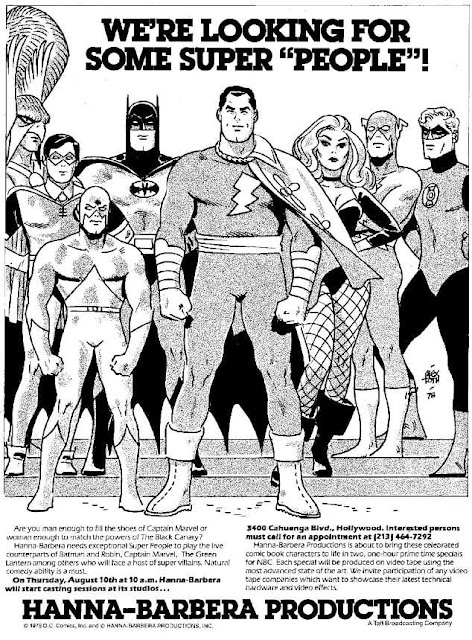I was the ideal age (pardon the pun) to be attracted to Captain Action when he first dropped onto the scene. I never got the doll (I resist the convention to call him an "action figure") but I always wanted one and have come close to pulling the trigger on some of the modern releases of the toy by others than the original Ideal company.
So being so enticed by the doll, I was certainly interested in the comic book which came out from DC Comics in late summer of 1968. I was just beginning my life-long career as a comic reader and wasn't at that moment as tuned into DC so I missed these issues when they first dropped for whatever reason. But I've made up for in the intervening years, collecting up all five of the originals some decades ago. But that said I still quite excited when finally a handy dandy reprint volume was announced earlier this year. I now have it, have read and here's a full report.
Captain Action is brought to life by boy writer Jim Shooter and veteran artist Wally Wood. Under a potent Irv Novick cover these two talents combine to give us the story of Clive Arno and his son Carl. Along with his associate Krellik unearth a trove of magic coins. They are told by the god Odin that the coins can give the powers of the gods to those who possess them. Krellik is immediately interested in getting hold of the coins for his own purposes but fails and instead comes into possession of another coin which gives him evil powers. Arno for his part returns home and becomes Captain Action with Carl becoming Action Boy. They confront Krellik who also is faced with Superman. Arno gets Superman to stand down and he takes the battle to Krellik but is seemingly defeated at the end of the story.
Gil Kane steps in to pencil with Wally Wood on inks. This is now a superior team as Kane's dynamic style is perfect for the title. Krellik allows Arno to survive but his desire for all of the coins remains. They battle and battle for possession but eventually Arno tricks Krellik with fake coins. Still he slips away as his threat is ended for the time being. As it turns out that's the last time we ever see Krellik. In the next issue we will meet Dr. Evil.
Dr. Evil makes his debut in issue three. Also making a debut is Gil Kane...a the writer. He takes over both the scripting and the art chores with Wally Wood's help on inks. The story is wacky one indeed with psychedelic overtones. Dr. Evil is in fact one Dr.Tracy (Arno's father-in-law in fact) but he gets transformed when an earthquake triggers a massive explosion which throws him into a strange dimension. He loses his humanity but gains vast intelligence along with desire to destroy mankind. It's all Captain Action and Action Boy can do to fend off the bizarre attacks which use the very forces of nature as weapons. He is though fended off with a classic Gil Kane punch.
But Dr. Evil turns up in the next issue which sees Gil Kane on writing and full chores. Dr. Evil with deadly race (which looks what he's turned into) and uses that knowledge to bring deadly menaces to the planet Earth. It should be noted that when Kane took over the writing he made Captain Action less omnipotent and gave limited powers such a great sight, ability to throw lightning and possessed of great strength. For his part Action Boy is reduced to mere super speed. Dr. Evil lives up to his name when he uses the ghost of his own daughter to haunt both Captain Action and Action Boy. She had been wife to Arno and mother to Carl. The attacks stop when the aliens step in to stop their former agent.
The fifth and final issue of the brief run sees Wally Wood back on inks. The story by Kane this time features a wannabe despot named Blackwell who uses hate to whip the populace into a frenzy to support him. (Sounds too close to reality for me these days.) He's actually a split personality and his other self is the father to a son who protests against the Blackwell forces. Captain Action and Action Boy fight these authoritarian forces but alas the tale ends quite tragically. Of all the very excellent Captain Action covers this one is my favorite.
Chic Stone is tapped to create art for a mini-comic for the Ideal Toy folks. It's mostly an excuse to shill Captain Action toys.
This comic book package is handsome and durable. It also features a lot of Captain Action extras like the ads which permeated the comics of the time as well as original artwork by Kane. This was Kane at his finest, with pages that never stop moving and at times burst off the page into the readers face. The stories are wild and imaginative if not always logical. We also get some of letter pages as well some of the text pieces which appeared in the comics at the time. Great package and highly recommendation.
Rip Off












.jpg)












.jpg)


























